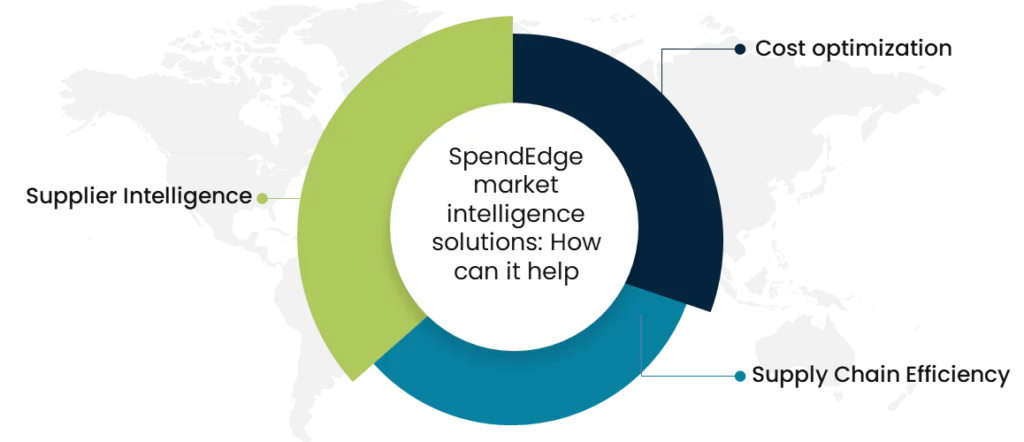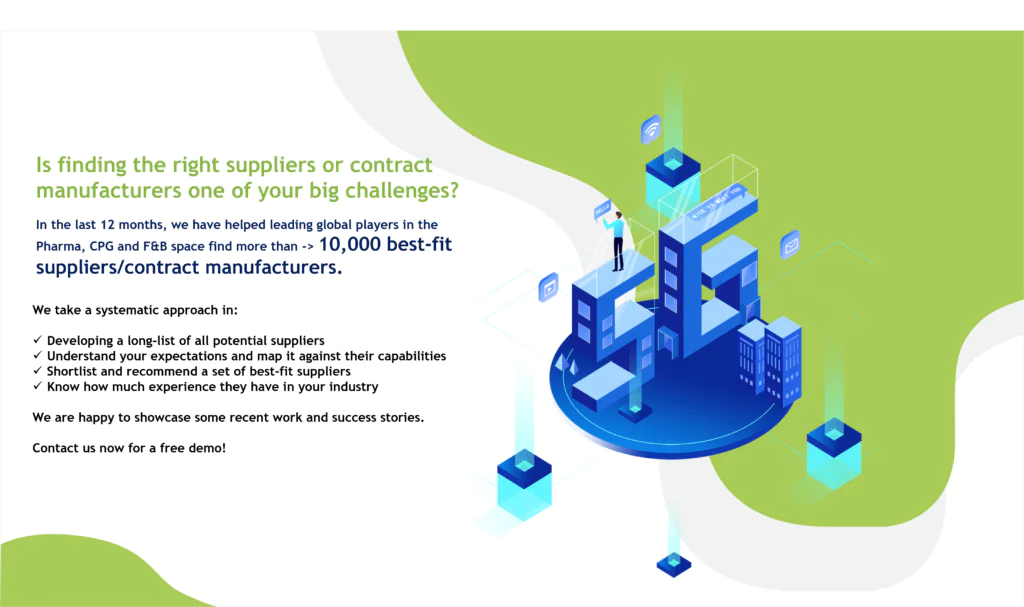By: Manpreet Kaur
Lean procurement within supply chain management entails achieving greater efficiency with fewer resources. Different companies and procurement professionals perceive this process in varied ways. Some companies opt to downsize their workforce, while others focus on reducing inventory levels. Essentially, lean procurement involves systematically identifying value-adding components within a manufacturing system and eliminating everything else. The essence of lean lies in waste reduction, and lean procurement embodies this principle by optimizing the procurement process. It leverages innovative web technologies and solutions to streamline operations, cut costs, and establish measurable accountability. In essence, lean procurement emphasizes practical and common-sense approaches to enhancing efficiency and effectiveness in procurement processes.
SpendEdge offers market intelligence solutions that empower businesses with comprehensive insights into market dynamics, supplier landscapes, and cost-saving opportunities. Through advanced analytics and expert analysis, SpendEdge helps organizations optimize procurement strategies, mitigate risks, and drive sustainable growth in a highly competitive global market landscape.
For more details on SpendEdge services
Application of Lean in Procurement
Lean procurement draws inspiration from lean production principles, emphasizing operational efficiency and customer satisfaction. Through a continuous improvement cycle, it aims to optimize supply chain processes, eliminating non-value-added activities and waste, whether in inventory, time, or costs.
The essence of enhancing procurement lies in improving goods or services’ quality while minimizing costs, time, and waste. Integral to this improvement is bolstering supplier performance and responsiveness. The integration of procurement technologies offers significant benefits, automating processes and minimizing manual errors while providing real-time process visibility.
Implementing lean principles in procurement streamlines operations, resulting in enhanced efficiencies, reduced process waste, and overall cost savings, ultimately delivering maximum value to both internal and external customers.
What is the Structure of Lean Procurement?
The structure of lean procurement typically follows a systematic approach aimed at optimizing processes and minimizing waste throughout the procurement lifecycle. Here’s a breakdown of its key components:
Value Stream Mapping: Lean procurement begins with a thorough analysis of the entire procurement process, mapping out each step from sourcing to delivery. This helps identify areas of inefficiency and waste.
Supplier Relationship Management (SRM): Establishing strong relationships with suppliers is essential in lean procurement. This involves selecting reliable suppliers, negotiating favorable terms, and fostering collaboration for continuous improvement.
Demand Planning and Forecasting: Accurate demand forecasting is crucial to prevent overstocking or stockouts. Lean procurement emphasizes the importance of aligning procurement with actual demand to minimize inventory costs and improve responsiveness.
Inventory Management: Lean procurement aims to minimize inventory levels by adopting just-in-time (JIT) inventory practices. This involves ordering and replenishing inventory only when needed, reducing carrying costs and the risk of obsolescence.
Process Optimization: Lean principles such as Kaizen (continuous improvement) and Kanban (visual management) are applied to streamline procurement processes. This includes standardizing workflows, eliminating bottlenecks, and implementing efficient approval mechanisms.
Technology Integration: Leveraging procurement technologies such as e-procurement systems, electronic sourcing platforms, and automated purchasing workflows can enhance efficiency and transparency in lean procurement.
Performance Measurement and KPIs: Establishing key performance indicators (KPIs) allows organizations to monitor and evaluate the effectiveness of lean procurement initiatives. Metrics such as on-time delivery, supplier performance, and cost savings are commonly tracked.
Risk Management: Identifying and mitigating risks is essential in lean procurement. This includes assessing supplier risks, market volatility, and geopolitical factors that may impact the supply chain.
Continuous Improvement: Lean procurement is not a one-time initiative but a continuous journey of improvement. Organizations must foster a culture of innovation and adaptability, encouraging employees to suggest and implement process enhancements.
What are the factors for a successful lean procurement?
Successful implementation of lean procurement is based on several key factors. Some of them are as mentioned below:
- Segmentation: Break down procurement functions into distinct categories such as supply, procurement, tactical purchasing, and strategic purchasing. Lean methodologies are particularly effective for downstream activities, aiding in the mitigation of third-party risks and reducing associated complexities.
- Focus: Direct attention towards resources that contribute the most value. Utilizing procurement technology tools can automate repetitive tasks, allowing buyers to concentrate on activities where significant value is generated.
- Customization: Tailor the sourcing process according to the products involved, ranging from essential and high-risk items to commodities or capital investments.
- Motivation: Inspire all departments to embrace changes through enticing incentive structures and the implementation of targeted solutions.
The integration of lean procurement bolsters a company’s core strategy, whether centered on cost efficiency, quality enhancement, or growth. Embracing lean methodologies as part of the organizational culture ensures continuous improvement and competitiveness across diverse business environments. Adherence to a set of guiding principles enables procurement to effectively achieve cost management objectives.
How can SpendEdge Market Intelligence Solutions help?

At SpendEdge, we specialize in delivering comprehensive solutions tailored to enhance procurement efficiency and drive sustainable growth for your business. Here’s how we address the key areas of supplier intelligence, cost optimization, and supply chain efficiency:
1. Supplier Intelligence:
We provide cutting-edge supplier intelligence solutions that empower businesses with valuable insights into supplier landscapes. Through advanced data analytics and market research, we enable organizations to make informed decisions regarding supplier selection, performance evaluation, and risk management. Our supplier intelligence services help businesses identify reliable partners, optimize supplier relationships, and mitigate potential risks, thereby enhancing overall procurement effectiveness.
2. Cost Optimization:
SpendEdge offers robust cost optimization solutions designed to help businesses identify cost-saving opportunities across their procurement processes. Through meticulous analysis of spending patterns, market trends, and supplier negotiations, we assist organizations in optimizing their procurement strategies to achieve significant cost reductions without compromising quality or performance. Our cost optimization services enable businesses to streamline sourcing processes, negotiate better deals, and ultimately enhance profitability.
3. Supply Chain Efficiency:
Leveraging our expertise in supply chain management, SpendEdge delivers tailored solutions to improve supply chain efficiency and resilience. We employ advanced analytics and industry best practices to optimize inventory management, minimize lead times, and enhance overall supply chain visibility. Our supply chain efficiency services help businesses mitigate disruptions, improve responsiveness to market demands, and drive operational excellence across the entire supply chain ecosystem.
In summary, SpendEdge is committed to helping businesses unlock value and drive growth through our comprehensive supplier intelligence, cost optimization, and supply chain efficiency solutions. With our expertise and innovative approach, we empower organizations to achieve procurement excellence and gain a competitive edge in today’s dynamic business landscape.
Request a free trial of our services at SpendEdge that can help you with lean procurement
Conclusion
In conclusion, the essence of lean procurement lies in achieving greater efficiency and effectiveness within the supply chain by minimizing waste and optimizing processes. By adopting lean principles, organizations can streamline procurement operations, reduce costs, and enhance overall supply chain performance. Through advanced market intelligence solutions, cost optimization strategies, and supply chain efficiency enhancements, SpendEdge empowers businesses to drive sustainable growth and procurement excellence. With a focus on continuous improvement and innovation, we enable organizations to navigate complex market dynamics and emerge as leaders in their respective industries. Partnering with SpendEdge equips businesses with the tools and insights needed to thrive in today’s competitive business landscape, delivering maximum value to both internal and external stakeholders.

Get in touch with our professionals and see how it helps your business
Author’s Details
Manpreet Kaur
Assistant Manager Presales – Sourcing and Procurement Intelligence
Manpreet is a presales specialist at Infiniti Research and has expertise in sales, business strategy execution, and innovative solution design. She is actively involved in supporting clients from F&B, CPG, Healthcare, Pharma, Chemicals, BFSI, Oil & Gas and Automotive sectors.




